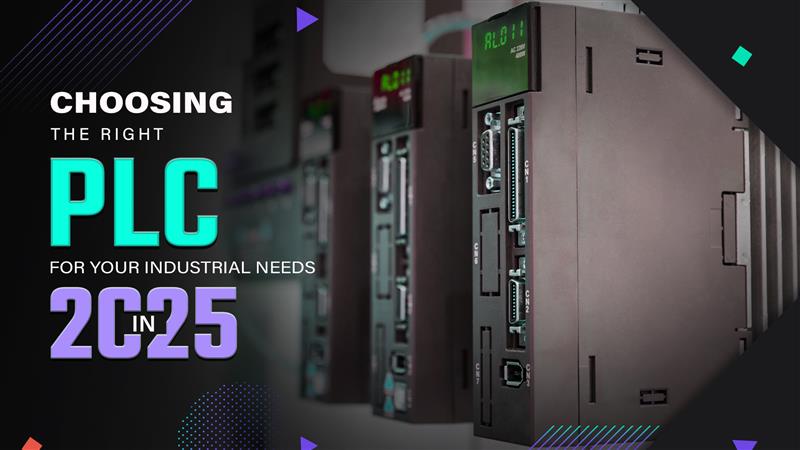What is PLC?
A PLC (Programmable Logic Controller) is a digital computer that is used for industrial automation. It takes input from sensors, executes logic according to a program, and then controls actuators or outputs. It’s a fundamental component in applications such as assembly lines, power generation, HVAC, and so forth.
Key Factors to Consider When Choosing a PLC
1. Application Requirements
Step 1 is defining your needs:
Is it for a small machine or for an intricate process?
Do you require real-time control, safety functions, or scalability?
Knowing the purpose of your system assists in limiting your choices between modular, rack-mounted, or compact PLCs.
2. Input and Output (I/O) Capabilities
Know the number of I/O points you require, and whether they are digital, analog, or a mix. Also, look for:
- I/O response time
- Expansion options
- Support for remote I/O
3. Processing Speed and Memory
Faster processors equate to faster decision-making. Select a PLC that has sufficient memory to accommodate your program size, particularly if you use complex logic, data logging, or SCADA integration.
4. Communication Protocols
Ensure the PLC is compatible with contemporary communication protocols such as:
- Ethernet/IP
- Modbus TCP
- PROFINET
- CANopen
Interoperability is essential, particularly for integrating with HMIs, VFDs, sensors, or cloud platforms.
5. Programming Environment
Use PLCs that are compatible with IEC 61131-3 programming languages such as:
- Ladder Diagram (LD)
- Structured Text (ST)
- Function Block Diagram (FBD)
- A friendly software environment can minimize engineering time and mistakes.
6. Scalability and Future-Proofing
Select a PLC that can scale up with you. If your project or plant is likely to grow, make sure the PLC has future I/O and feature expansion capabilities.
7. Reliability and Environment
PLCs must be robust enough to handle rugged industrial environments—dust, heat, humidity, or vibration. Look for:
- IP ratings
- Conformal coating
- Operating temperature range
Emerging Trends in PLCs for 2025
Edge Computing & IoT Integration
New-generation PLCs include edge processing, enabling them to process and filter data locally before sending it to the cloud.
AI & Predictive Maintenance
Increased PLCs integrate with AI platforms to support condition monitoring and predictive maintenance. This reduces downtime and enhances OEE (Overall Equipment Effectiveness).
Mobile & Cloud Connectivity
PLC suppliers today provide platforms that enable engineers to monitor and control systems remotely through smartphones or tablets, enhancing operational flexibility.
Cybersecurity Built-In
As the world becomes more connected, so does the need for strong security. Next-generation PLCs are equipped with:
- Encryption
- Role-based access
- Secure boot & firmware
Top PLC Brands to Consider in 2025
Siemens PLC systems – Popular for their powerful S7 series and intuitive TIA Portal software, Siemens Brand is one of the most comprehensive automation solutions for industrial applications.
Allen-Bradley PLCs (Rockwell Automation) – Best known for ControlLogix and CompactLogix controllers, these systems are ideal for demanding applications that require precision and scalability.
Mitsubishi Electric automation PLCs – Trusted for delivering robust, high-performance, and scalable control solutions, Mitsubishi Brand are suitable for a wide range of industries, from automotive to packaging.
Schneider Electric PLC controllers – The Modicon series, especially when paired with EcoStruxure architecture, is a popular choice for integrated industrial automation and energy management.
Omron industrial PLCs – Known for smart solutions with AI-enhanced control and advanced motion capabilities, Omron brings innovation to machine automation.

